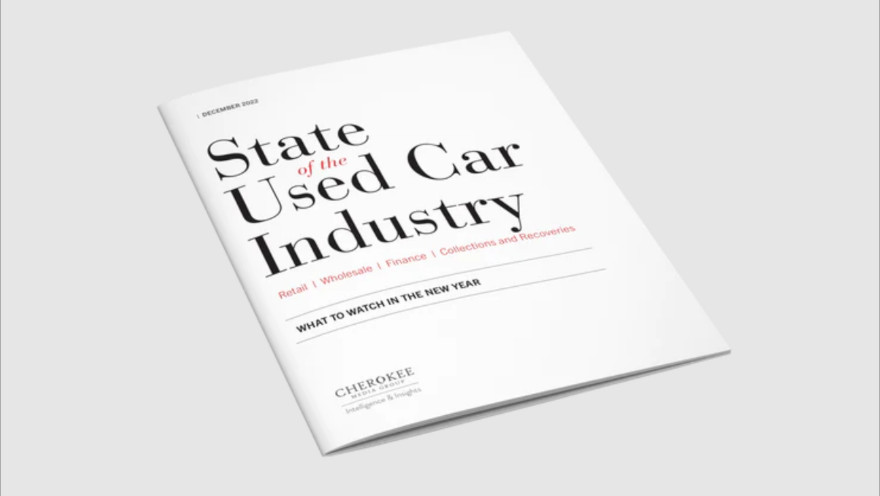When it comes to used-vehicle values, the story of 2023 could center on the theme of “correction.”
That certainly has been the case for much of 2022, as illustrated by commentary from ADESA chief economist Tom Kontos shared via email with Auto Remarketing.
Throughout the year, the gap between 2022 average auction prices and those from 2019 has moderated.
In February, average auction prices were 50.7% higher than 2019 levels, Kontos’ data shows. In November, that gap had narrowed to 30.5%.
This amid a spring price uptick (7.2% between February and May) that was lower than that of 2019 (8.3%), and a May-to-November depreciation (18.1%) that was nearly three times as steep (6.4%), according to the data.
“I think used-vehicle prices still have room for a further ‘correction’ to more normal levels of depreciation and relative to new-vehicle prices,” Kontos said via email.
“I expect average prices to drop further in December and January (1-3% per month) and then rise only moderately in the spring (less than 5% from February to May), leaving them down significantly on a year basis,” he said. “The correction will continue the rest of the year, with steeper than normal seasonal declines from May-December.”
Over at Black Book, senior vice president and chief data science officer Alex Yurchenko anticipates 18% depreciation in 2- to 6-year-old vehicles, following what’s expected to be 22.5% depreciation in 2022.
In 2021, there was actually 28.7% appreciation for these vehicles after 2.0% depreciation in 2020.
The pre-COVID year of 2019, deprecation was at 16.8%, according to Black Book.
“Our current forecast is for wholesale prices to continue the decline through 2023 at the elevated annual rate” as compared to the pre-COVID normal annual rate, Yurchenko said.
He anticipates that each half of 2023 will show similar depreciation rates, whereas typically the second half of the year has the lion’s share of the slowdown.
“In the first half of the year, economic uncertainty (and possibly recession) will be the driving force for the decline prices (and soft demand),” Yurchenko said via email.
“On the other hand, with new vehicle supply / inventory improving in the second half of the year together with increased incentives, the reduced pressure from the new market will allow used wholesale prices to decline,” he said. “This decline will be somewhat moderated by a reduction of lease returns in Q3 and Q4 of next year.”
For more insights into 2023 used-car market predictions, check out Cherokee Media Group’s latest “State of the Used Car Industry” whitepaper, which is available now.
This whitepaper recaps many of the 2022 developments that set the stage for industry leaders to consider a host questions.
Will dealers find the inventory they need? And how much are they going to have to pay for it? After looking at the paper already in their portfolios, will finance companies tighten underwriting guidelines? And what happens to a glut of repossessed vehicles if defaults spike?
We hope the data and insights in this whitepaper give you reference points to consider as 2023 unfolds, as we all learn how the resilient used-vehicle industry responds.
The paper will be sent to Cherokee Media Group Premium subscribers for free.
For non-CMG Premium readers, it can be purchased here.
J.D. Power Valuation Services noticed wholesale prices closed the first quarter stronger than analysts initially expected. As a result, the firm again is adjusting its 2019 forecast after incorporating March’s information.
After six consecutive months of declines, analysts reported in the latest installment of Guidelines that the used-vehicle market bounced back in March. The rebound resulted in the J.D. Power Valuation Services’ Seasonally Adjusted Used Vehicle Price Index increasing by 1.1 points relative to February to 117.5.
J.D. Power Valuation Services explained March’s positive result comes after weaker than usual January and February performances, which triggered previous forecast updates.
“Typically, prices begin to heat up in the February period, especially for affordable mainstream segments, however, that was not the case this year,” analysts said.
“The lackluster start to 2019 was driven by lower than expected and delayed federal tax returns,” they continued. “Historically, consumers have used tax refunds as healthy down payments on vehicle purchases. While there is still a lot of uncertainty surrounding the tax situation, it did begin to improve around the middle of February. The improvement was likely too late to be realized in February as it does take time for refunds to be realized and hit bank accounts.”
J.D. Power Valuation Services cited federal data that indicated average refunds distributed through the end of March reached $2,873, a figure only $20 below the same period in 2018. However, the firm pointed out the overall amount of refunds issued by the IRS was down 2.2%
“There is concern that average refund amounts will decline further because a greater share of late filers usually owe money,” analysts said in Guidelines.
Updated forecast
No matter how potential buyers receive from in a tax refund, J.D. Power Valuation Services acknowledge the used-vehicle market is expected to slow in 2019.
But with March’s rebound now on the books, analysts’ outlook improved with their expectations for wholesale prices softening by 2% by the time this year finished.
Along with March’s data, analysts explained their forecast was influenced by “increasing levels of used supply along with more volatile credit conditions and increasing gasoline prices, which are expected to apply downward pressure on the used side of the market.
“Labor conditions are expected to have a neutral impact, while solid home prices and overall consumer appetite for used cars, which is supported by increases in equipment as well as more advanced safety and technology features, will help to balance out but not overweigh the anticipated negatives for the year,” J.D. Power Valuation Services went on to say.
More details about March wholesale price movements
In terms of the wholesale market, J.D. Power Valuation Services determined prices of used vehicles up to 8 years in age increased by an average of 2.7% in March. The month’s result was nearly identical to March of last year and more than 1 percentage point better than how the market performed in both March of 2016 and 2017.
At the segment level, analysts the biggest increases were recorded among mainstream small, compact and midsize car segments.
“As affordability continues to become more important, prices for these segments should continue to be bolstered due to their cost in relation to comparable SUVs and because of decreases in used supply of these segments,” J.D. Power Valuation Services said.
“Pickup trucks and large SUV prices were the softest on the mainstream side of the market,” analysts continued in Guidelines. “Gasoline prices have ticked up for the eight straight weeks now and are now up by 50 cents over the last 90 days. This is unlikely the reason for price softness last month in these segments, however, it is something that will be monitored closely.”




